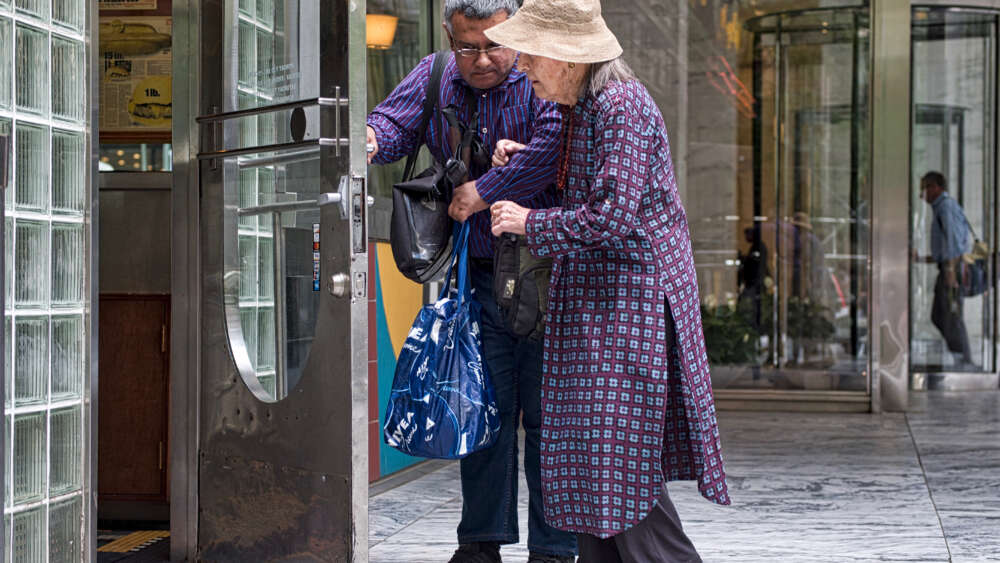There is no excuse for abuse! Yet many older people experience significant abuse including physical, social, financial, psychological, sexual, mistreatment and neglect. Indeed, many victims of elder abuse experience multiple forms of abuse. The UN has nominated Wednesday, 15 June, as World Elder Abuse Day as it is estimated that up to 10 per cent of older people experience elder abuse. Yet while domestic and child abuse are regularly in the press, as they should be, we rarely hear about elder abuse.
Sexual abuse
Enid* needed help with tasks such as dressing, showering and going to the toilet. Her daughter used her smartphone to take intimate photos of her and threatened to share them if Enid did not ‘behave’.
This lack of awareness is partially because ageism is systemic globally, with a 2021 WHO report finding half the global population is ageist. If that is not scary enough UnitingCare Queensland data shows there has been a 34 per cent increase in elder abuse notifications in Queensland during the COVID-19 pandemic, which is the highest number of reports on record. Sadly, we know reporting of elder abuse is critically low. This is because abusers can easily restrict a person’s ability to report through threats and simply not providing a phone and because 95 per cent of abusers are family members. Imagine calling authorities to report your child is abusing you; the emotional toll is terrible.
You will never see your grandchildren
Peter was a 95-year-old widower who was desperate to keep his independence and stay in his own home. His only daughter lived a few hours away and struggled to hold down regular work. So, she habitually asked Peter for cash and goods with the threat of him not seeing his grandchildren.
It would be nice to think that elder abuse could not happen in our churches, but churches are full of sinners, and just as with other forms of abuse, the church is not immune. Moreover, the signs of elder abuse can be hard to separate from the challenges of ageing. In addition, abusers often gaslight the victim and groom family and friends by claiming the signs are due to ageing and or dementia.
Six signs of elder abuse
1. Physical injuries (bruises, cuts and broken bones).
2. Weight loss.
3. Loss of or declining hygiene.
4. Declining mental health (anxiety, depression and confusion).
5. Loss of both objects and money.
6. Social isolation.
The increasingly tight Australian housing market and increasing cost of living lead to an increased risk of elder abuse. Lack of housing makes escaping elder abuse harder, and financial pressure contributes to the most common form of elder abuse – financial abuse.
Whose home?
As Betty* got older, she needed more help at home. So, when her grandson lost his rental, it seemed like a perfect fit for him to move into her spare room. However, over time she ended up being trapped in her own room while he took over the house.
The good news is both Christians and churches can and are powerfully fighting elder abuse. From the pulpit, the commandments to love your neighbour and honour your parents are being proclaimed, along with the reality we are all of immutable value because we are created in God’s image. Many churches run groups aimed at engaging with older people, which not only care for them but provide valuable respite and community for carers. This is critically important as a major risk factor for elder abuse is the isolation of older people and their carers, who can become exhausted. Christians are reaching out to their neighbourhood: helping with the shopping, regularly having a cuppa with the lady down the road, and perhaps most powerfully, praying.
In this vein, we can all help prevent elder abuse simply by engaging with older people. If we all engaged with one older person, the prevalence of elder abuse would drop, and we would benefit from the privilege of such a relationship. In terms of our families, we also need to consider how we support older loved ones and whoever is the primary carer.
St Anonymous’s
St Anonymous’s congregation realised both they and their local community were ageing. Initially, they planned to try to get a youth worker to revitalise the church. However, they realised all the other churches locally were also full of older people and also trying to attract the few young people who lived nearby.
So, they did the radical – they decided to focus on caring for and reaching the older people in their community. It was not easy, but over time the church grew in both numbers and collection. Yes, there was a continual flow of funerals, but there was also regeneration not with teenagers but with adults who either reconnected with church or came to faith.
Finally, we need to be aware of and fight against ageism. This starts with our own thinking about the value of older people. We need to remind ourselves that people’s value is not in their youth, beauty, ability to work or their mind. The basis of abuse is devaluing and dehumanising the victim. We need to watch our words; we do not describe a person living with cancer as cancered, so how is it appropriate to speak of a person as demented? Dementia is real, but it does not define people. All people are created in God’s image and thus are of immeasurable worth.
The only question is will we recognise that value, and love each other as Christ loves us?
*Names and details changed to protect confidentiality.
Email This Story
Why not send this to a friend?



